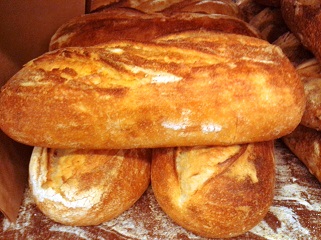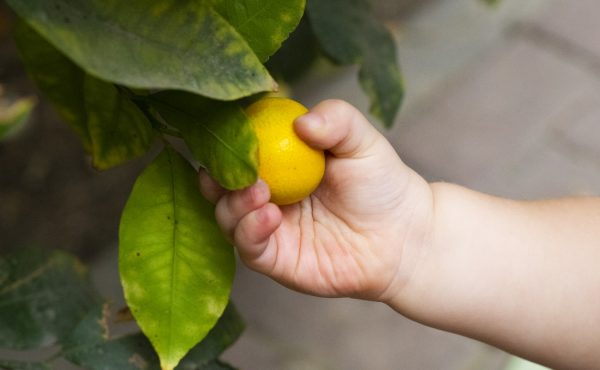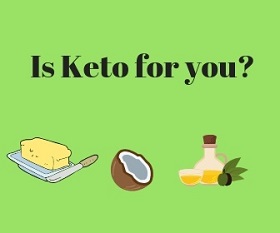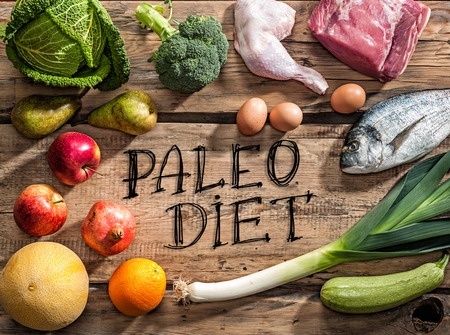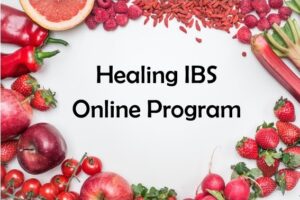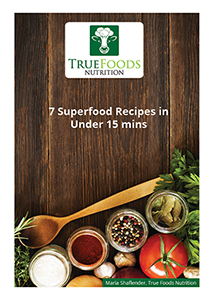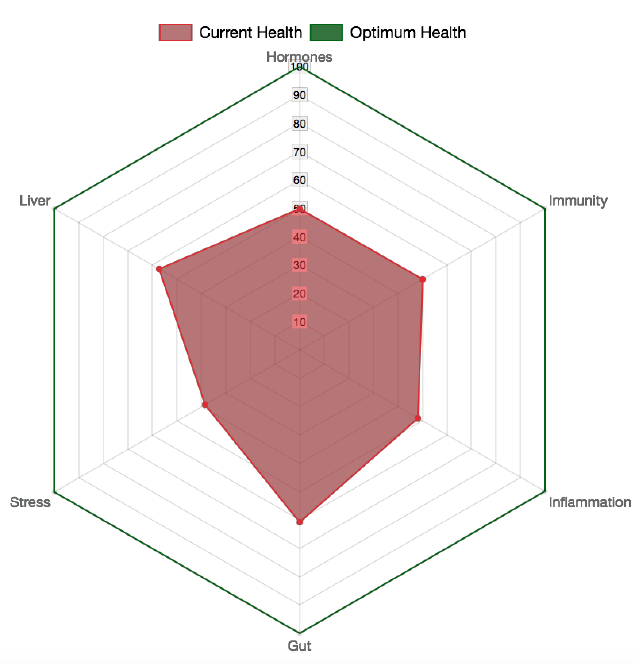What’s wrong with bread?
When I explain to friends what a Paleo way of eating is about, I only have to wait for about a minute until the penny drops and they get that look on their face (as if I’m from Venus) and they predictably exclaim ‘You mean you don’t eat bread??’ I always find this amusing, as if the human race can’t possibly survive without this staple, and to avoid eating it is like a heresy equivalent to witchcraft!
It’s important to know that despite the fact that in today’s world bread is everywhere and grain products are not only a part of almost every meal, but are an ingredient in the vast majority of processed products, this wasn’t always so!
Humans only started cultivating grains around 10,000 years ago (referred to as the ‘agricultural’ age) and processing of grains by commercial mills into refined flour only began with the industrial revolution in western countries. 10,000 years is equal to roughly 366 generations.
I can almost hear you say ’10,000 years is an awfully long time, so grains are a natural part of the diet!’ Unfortunately this is not the case. Human generations that existed without grains have been around for over 2 million of years, or 76,000 generations. During this time, virtually no grains were consumed according to anthropologists who look at bone fragments for clues about early human diets. These ‘cave’ people ate whole animals, wild vegetables, nuts, berries and some fruit when they were lucky to find it.
Unfortunately for us today, our genes are still pretty much from the caveman era as they have not adapted to this new diet. But our eating habits are so far apart from what our bodies were designed to eat, we’ve started running into all sorts of problems, called cancer, diabetes, heart disease and autoimmune diseases.
Many traditional societies since the industrial revolution have successfully included grains in their diet to varying degrees. However, through trial and error and traditional wisdom, they figured out that grains need special preparation before they can be eaten without ill effects: they soaked them, sprouted them, lacto-fermented them. They spent big chunks of time making sure they were properly prepared before the flatbreads were ready to eat by the family. All of these preparation techniques are virtually non-existent today.
All this preparation stuff is way too much to worry about for the big brand bakeries who quickly strip all the vitamin containing parts of the grain off through high heat processing, grind it into a nice powder, bleach it to make it look pretty and then spray it with the synthetic form of the vitamins they stripped off in the first place!
5 reasons to avoid grains
1) Effect on blood glucose and the brain
Grains (including whole grains) are high carbohydrate foods that trigger a strong insulin response in the body after eating. Frequent consumptions of refined grains leads to over-production of insulin and elevated blood glucose levels that may be a cause of insulin resistance and type 2 diabetes.
Several studies have also shown that grain carbohydrates can be addictive, also a contributing factor in weight gain. Compounds in grains stimulate dopamine in the brain, a chemical that produces pleasure signals. Gluten proteins are morphein-like molecules (‘exorphins’), which means they have a drug like effect on the brain, inducing cravings and creating addictions in susceptible people.
These two factors make it virtually impossible for overweight and obese people to lose fat without eliminating or drastically reducing grain carbohydrates.
2) Gluten
I could write a whole post just about gluten (and I will one day soon!), but here is just a brief summary about its damaging effects.
Most people know that celiac disease is when someone has a severe autoimmune reaction to eating gluten found in grains such as wheat. Whilst this severe reaction to gluten is not common, what many people don’t know, is that gluten sensitivity (or intolerance) is extremely common and may not manifest itself in a severe reaction.
Gluten proteins get into the bloodstream through the ‘doors’ of the small intestine (called ‘tight junctions’) when these are not ‘tightly closed’- what is known as intestinal permeability or ‘leaky gut’. Some people are more pre-disposed to leaky gut than others, but simple facts of life like stress can also trigger tight junctions to open. The immune system sees these gluten proteins in the blood (where they don’t belong) and triggers an attack on them to protect the body from these invaders.
Unfortunately, our immune system can get ‘confused’ and instead of mounting a response just to the gluten, can mistake our own body tissues for the invader. For example, in the case of multiple sclerosis, our own immune system attacks myelin tissues, the cells that conduct brain communication to muscles. So food particles like gluten have been extensively studied as key culprits in autoimmune diseases.
The issue with gluten is that while a small number of people have celiac disease, a VAST number of people have gluten sensitivity.
To quote Dr Alessio Fasano, the world’s leading celiac disease expert:
“The symptoms can really affect any organ or tissue in your body, but also they are very unspecific. It can go from a stomach-ache to fatigue to anaemia to the tingling of your fingertips and so on and so forth”.
Gluten sensitivity is a mild inflammation in the body that slowly drains our energy, mineral reserves, and very slowly over time can lead to a large number of health issues.
I’ve heard prominent immunologists and a Harvard professor of neurology firmly state that every human is impacted by gluten. Some more than others- the spectrum is very broad: from no ‘visible’ effects to celiac disease. Not all gluten symptoms are digestive and many can silently impact every organ in the body- the brain, the kidneys, the heart as well as the immune system. We simply don’t know enough about this molecule to be able to say what its effects can be on an individual.
For me that means one thing: avoidance is best.
Grains that contain gluten include: wheat, barley, rye, oats, kamut, spelt, triticale,
These grains and ‘pseudo’ grains do not contain gluten: buckwheat*, amaranth, quinoa, rice, corn, millet, potato flour, arrowroot
(*Buckwheat is a seed, not a grain)
3) Phytates
Phytates or phytic acid is a molecule that is located in the hulls of grains (as well as legumes, nuts and seeds*). It binds or holds together minerals such as calcium, magnesium, iron and zinc together in the digestive tract, preventing their absorption into the body. While many grazing animals like cows and sheep have several stomachs and many digestive enzymes to break down phytic acid, humans do not.
Needless to say, calcium, magnesium, iron and zinc are vitally essential minerals. Without these functions such as bone formation, muscle work, blood oxygenation and free radical destruction cannot take place.
Traditional preparation methods such as soaking, sprouting and fermentation allowed for the destruction of most of the phytic acid. Modern day flour and bread are loaded with phytic acid leaving many people and especially children highly deficient in basic minerals. In this age of soil depletion of basic minerals, we really need to get as many as we can from food!
*phytates are one of the reasons why nuts and seeds should be consumed moderately and not as a main source of protein and always properly prepared.
4) Lectins
Lectins are abundant in grains (and legumes too), especially wheat. They are food proteins responsible for cell agglutination- making cells ‘sticky’ and less able to perform their functions. Lectins stimulate production of mucus and contribute to allergies and respiratory problems. They interfere with the immune system of the gut, provoking an immune reaction- a common reaction in numerous autoimmune diseases (multiple sclerosis, hypo/hyper thyroidism, fibromyalgia, rheumatoid arthritis, to name a few).
Lectins damage the lining of the small intestine, making it more permeable (‘leaky gut’), leading to intolerances and allergies. Lectins found in wheat (wheat germ agglutinin) mimics the actions of insulin in the body- raising your blood sugar levels in the same way as eating sugar does.
As grains are the seeds of grass plants, when you eat some bread or pasta, you’re eating thousands of these seeds- a lot of lectins!
5) Fibre- yes, fibre!
That stuff we are always told we need more of! “Eat more fibre. Eat more whole grains” is the regular recommendation of dieticians and the government. Unfortunately, numerous research studies have shown that excessive fibre is harmful to our digestive system. What we are not told is that whole grain products are still refined, processed products. Adding fibre to cereals and breads, even whole grain ones, gives manufacturers an easy health claim to put on the package as fibre has become synonymous with health.
Much fibre from grain is not digestible or absorbable and some types actually ‘flush’ important minerals like magnesium, zinc and iron out of the system by binding to them. Excessive fibre also alters our gut flora (good bacteria).
Of course we need fibre, it is vital for proper digestion and bacterial balance. But the fibre we get from root vegetables, green vegetables, fruit, nuts and seeds is PLENTY to ensure every metabolic need is met. These sources of soluble fibre feed the ‘good’ bacteria in our gut and optimising digestive health.
Most people who ditch grains in favour of more vegetables as a fibre source find that their digestion improves tremendously, BECAUSE the fibre from grains is no longer there.
Ditch the grains to feel better
Putting the science aside for a moment, many, many people just feel significantly better after eliminating grains. They report having more energy, significantly improved digestive health, reduction of a vast number of ‘disease’ symptoms, better mood and not feeling hungry all the time amongst many others. Their blood sugar stabilises and they don’t feel like they can ‘eat a horse’ after every 3 hours without food. They lose weight and eat better quality nutrient dense food that now fills their plate instead of pasta, bread, oats, quinoa and other ‘wholegrains’.
I’ve had this experience and found it liberating. The difference I felt after just 3-4 days of cutting out grains was remarkable.
Don’t take my word for it- check out my reviews of books in Recommended Reads or email me for a list of great (mostly US based) blogs on Paleo diet including many remarkable health recoveries.
If you do decided to ditch the grains, go slowly. Your body may react in all sorts of ways, so try cutting them out from breakfast for a few days, then from lunch for a few days and then altogether.Of course there will be times when there is just nothing else to eat or you just feel like a good piece of sourdough! Go ahead and have it. It’s not going to do any harm (unless you have gluten intolerance or celiac disease of course). But the next day, go back to your new way of eating and try to stick to it. You will want to, as the benefits are worth it!!
Note: I personally follow Paleo pretty strictly 95% of the time, when I don’t- I don’t feel well. However children’s metabolic needs are significantly higher than adults, and my belief is that unless they have obvious digestive discomfort after eating grains (and many kids do), of course you can find ways for them to enjoy grain dishes. Also, it’s hard to ensure a broad variety in the kids’ diet, so small portions of grains now and again can work well to broaden the repertoire of dishes they are eating. All grains have to be properly prepared by soaking, sprouting or fermentation to provide nutritional value and not do any harm, as well as always consumed with plenty of saturated fats (butter or coconut oil) to ensure the nutrients in them get absorbed.
P.S: special note on the latest grain ‘super food’ Quinoa. So often people say to me, ‘Oh, I know wheat is bad for you, I don’t eat it. I only eat quinoa!’
Be careful to always thoroughly wash quinoa as it contains an anti-nutrient – saponin (the stuff that soap and detergent is made from, so definitely toxic). Saponin molecules are able to penetrate cell walls (often used in vaccines for this very purpose) and trigger an immune response within the body. Quinoa also has phytic acid (see above), so soaking and fermentation are highly recommended.
Have you tried ditching grains? How did you benefit?
-
- Chris Kresser, ‘Myths and Truths About Fiber’, Feb 2012, www.chriskresser.com
- ‘The trinity of factors leading to autoimmune disease’, an interview with Dr Alessio Fasano, www.chriskresser.com
- Loren Cordain PhD, ‘The Paleo Diet’, 2010
- Joseph Brasco, MD “Low Grain and Carbohydrate Diets Treat Hypoglycemia, Heart Disease, Diabetes Cancer and Nearly ALL Chronic Illness”, www.mercola.com, viewed on Aug 20, 2013
- Peter D’Adamo, ‘Live right for your type’, 2001
<li?Diane Sanfilippo, ‘Practical Paleo’, 2012
- Nora Gedgaudas, ‘Primal body, primal mind’, 2011

